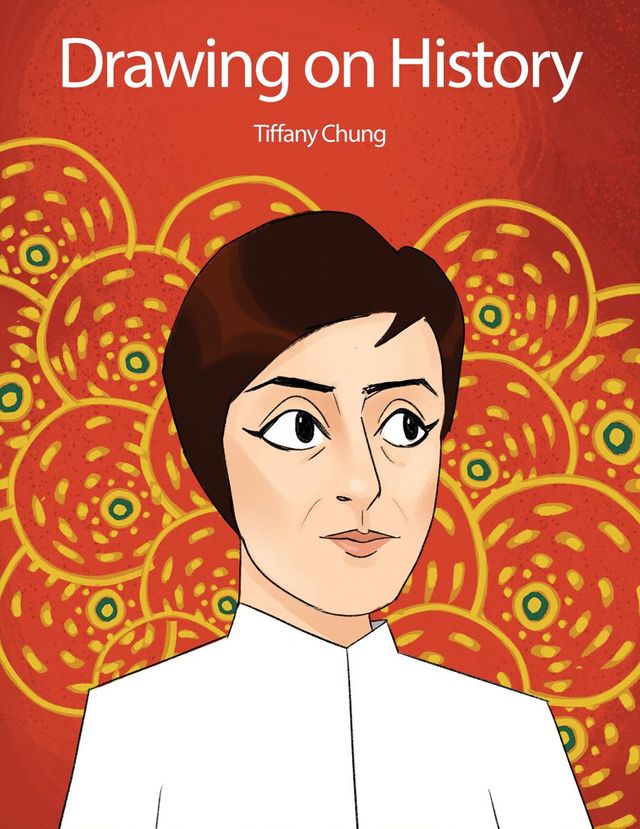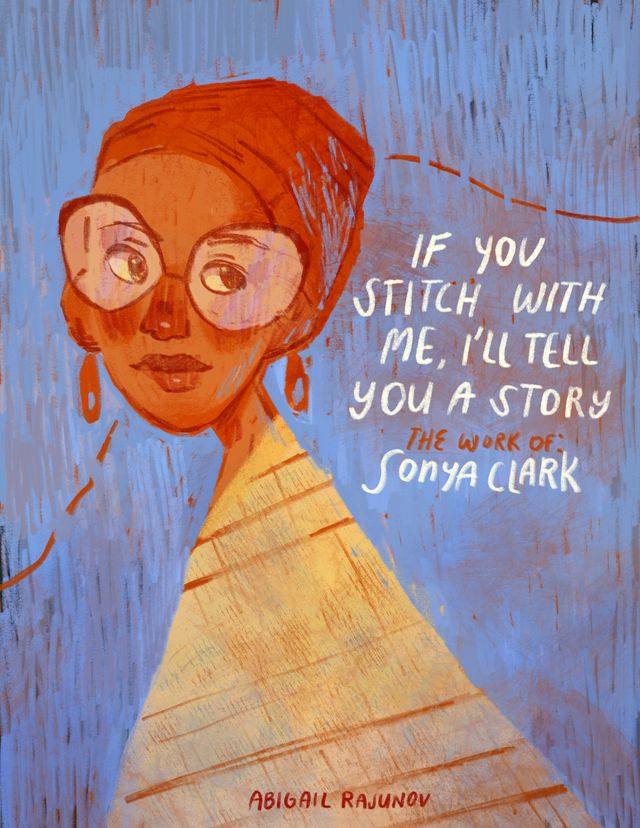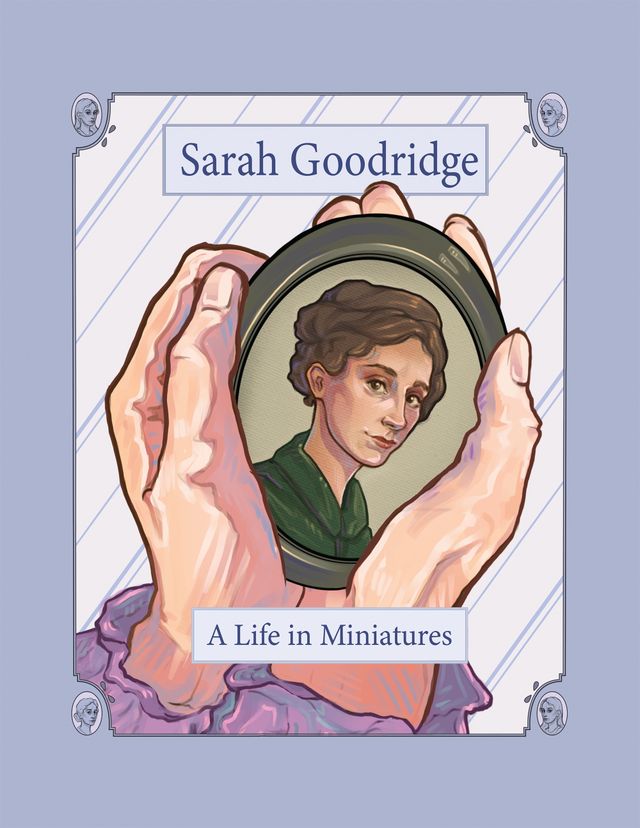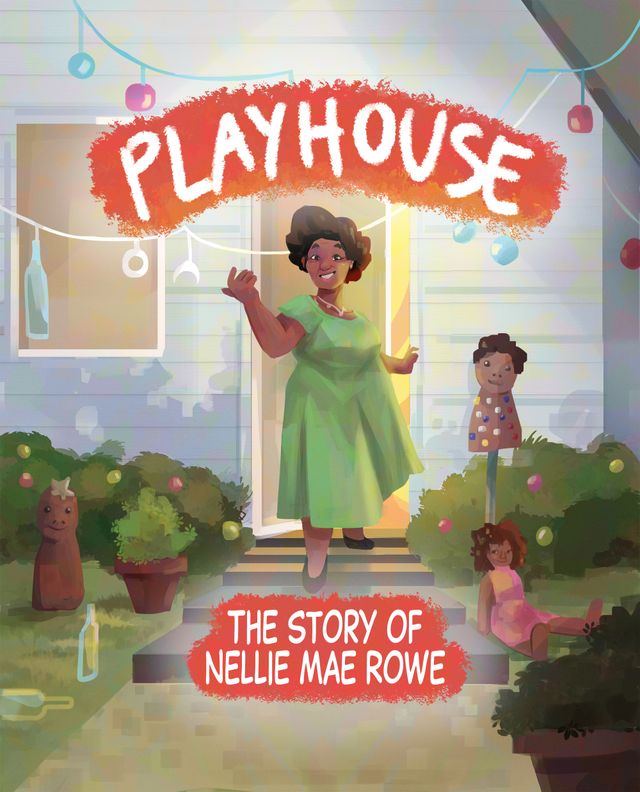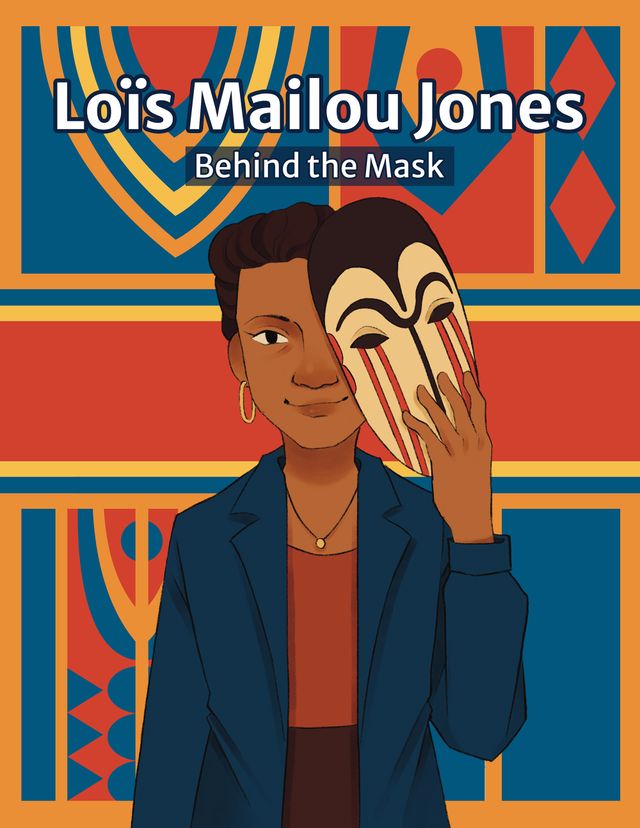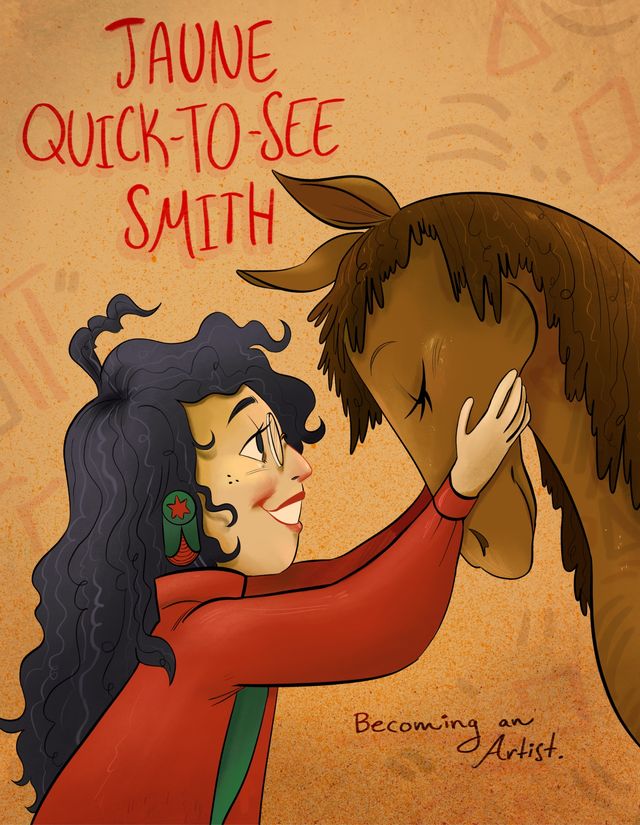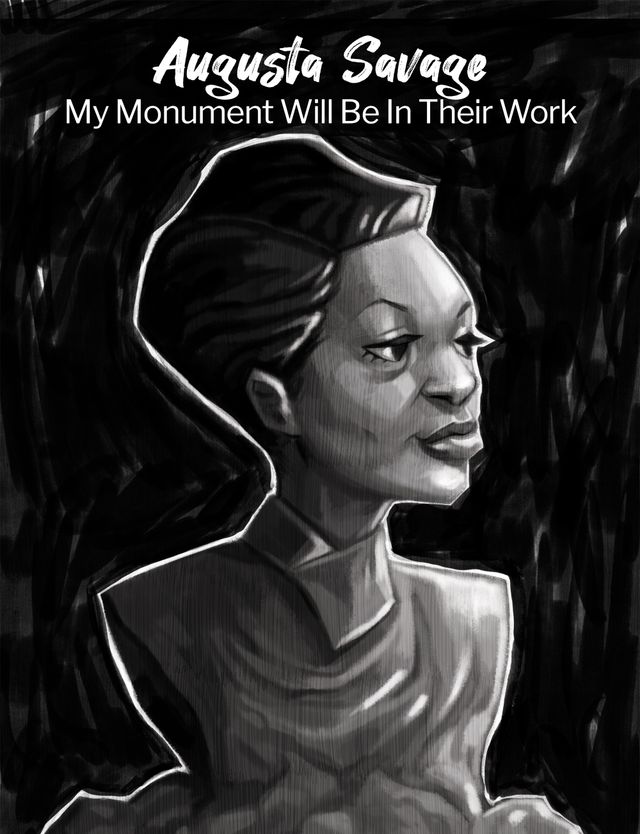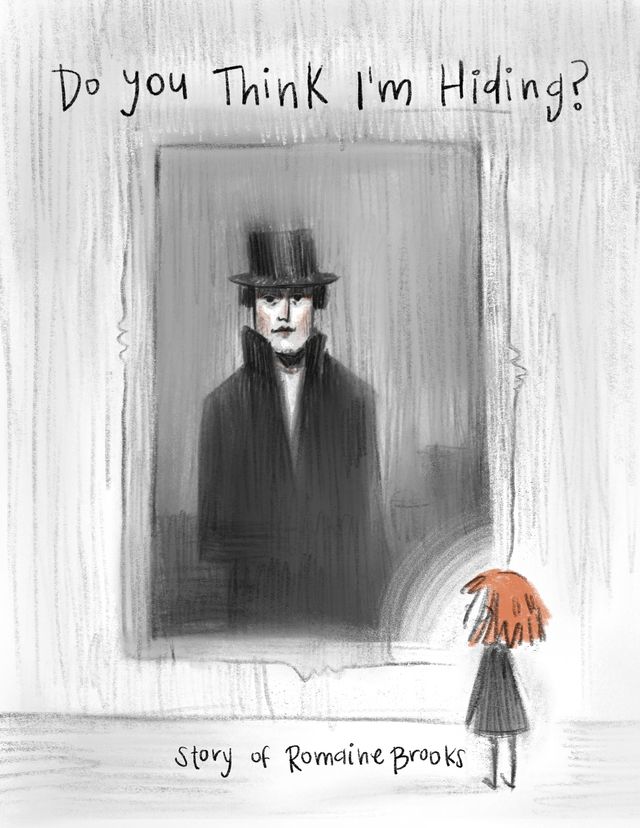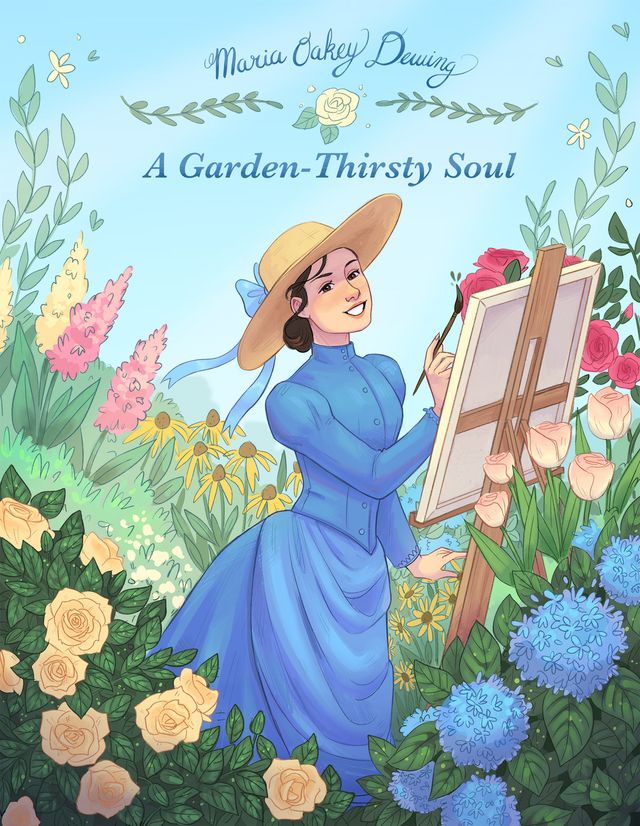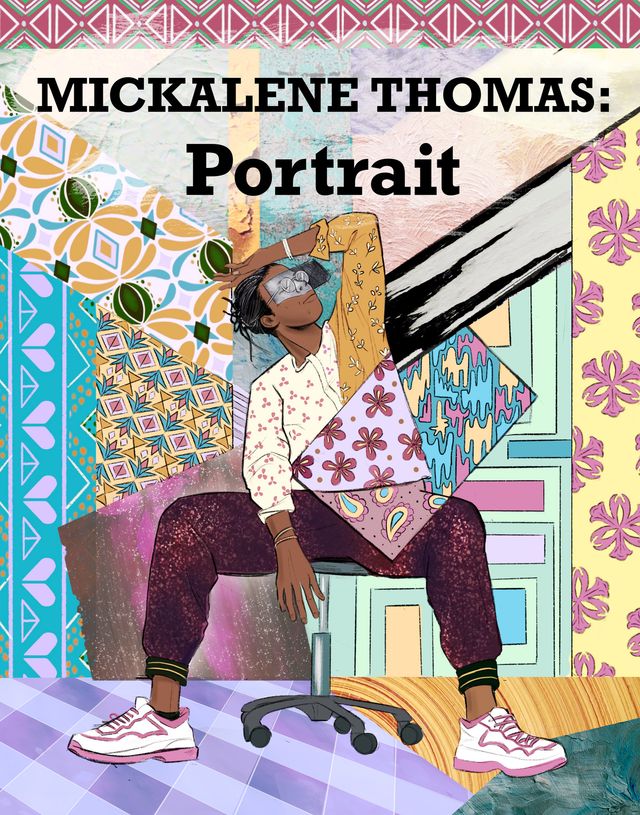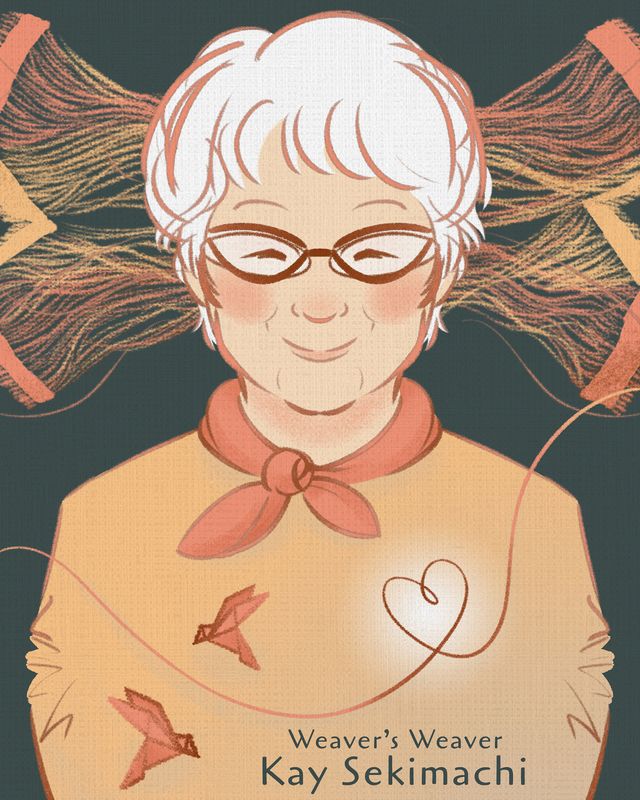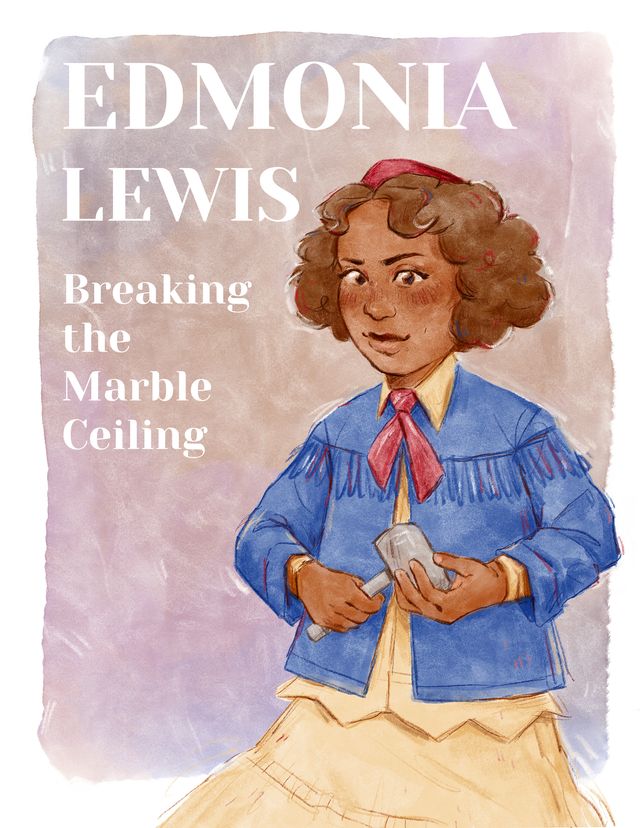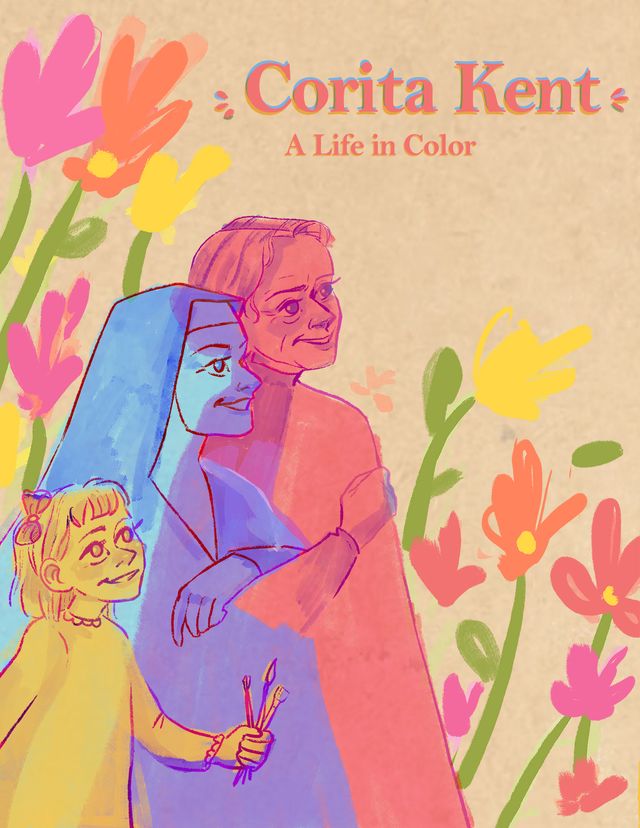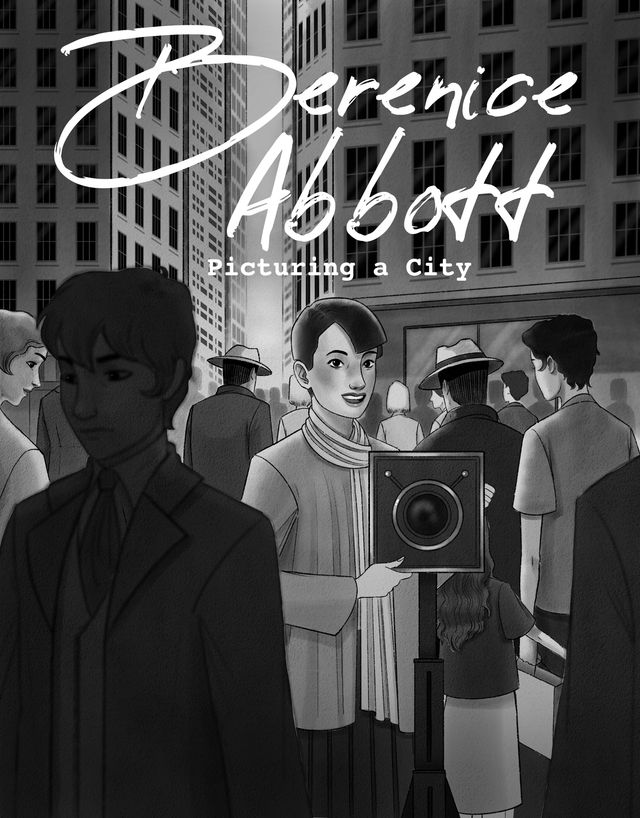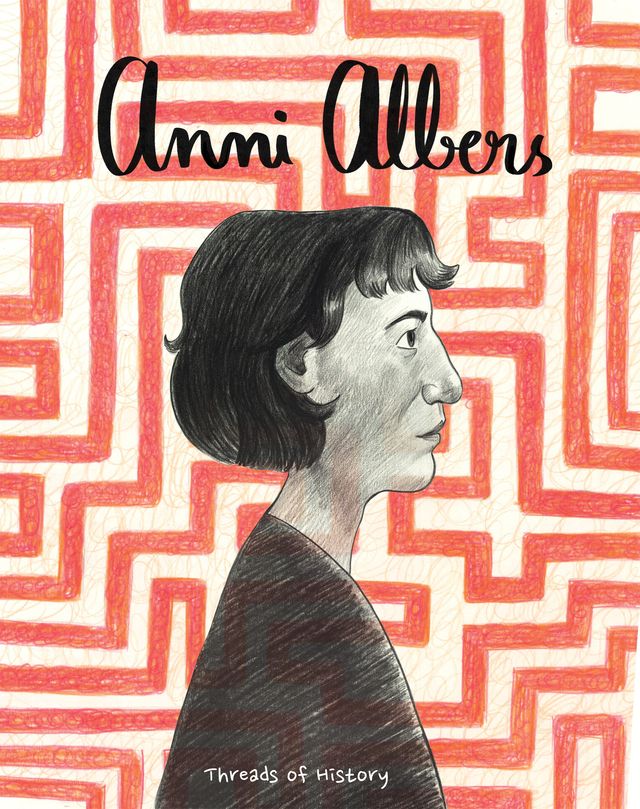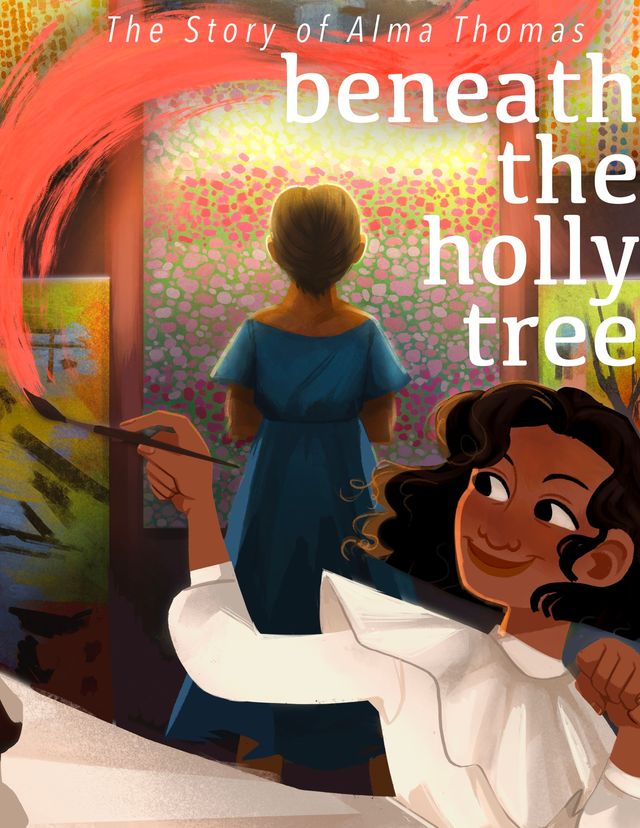This comic is part of a series Drawn to Art: Ten Tales of Inspiring Women Artists that illuminates the stories of ten women artists in the collection of the Smithsonian American Art Museum. Inspired by graphic novels, these short takes on artists’ lives were each drawn by a woman student-illustrator from the Ringling College of Art and Design.
Carmen Herrera was born in Havana, Cuba, then lived in Paris before moving to New York City in 1952. She faced discrimination in the art world for being an immigrant and a woman and only found success late in life for her minimal, beautiful works.
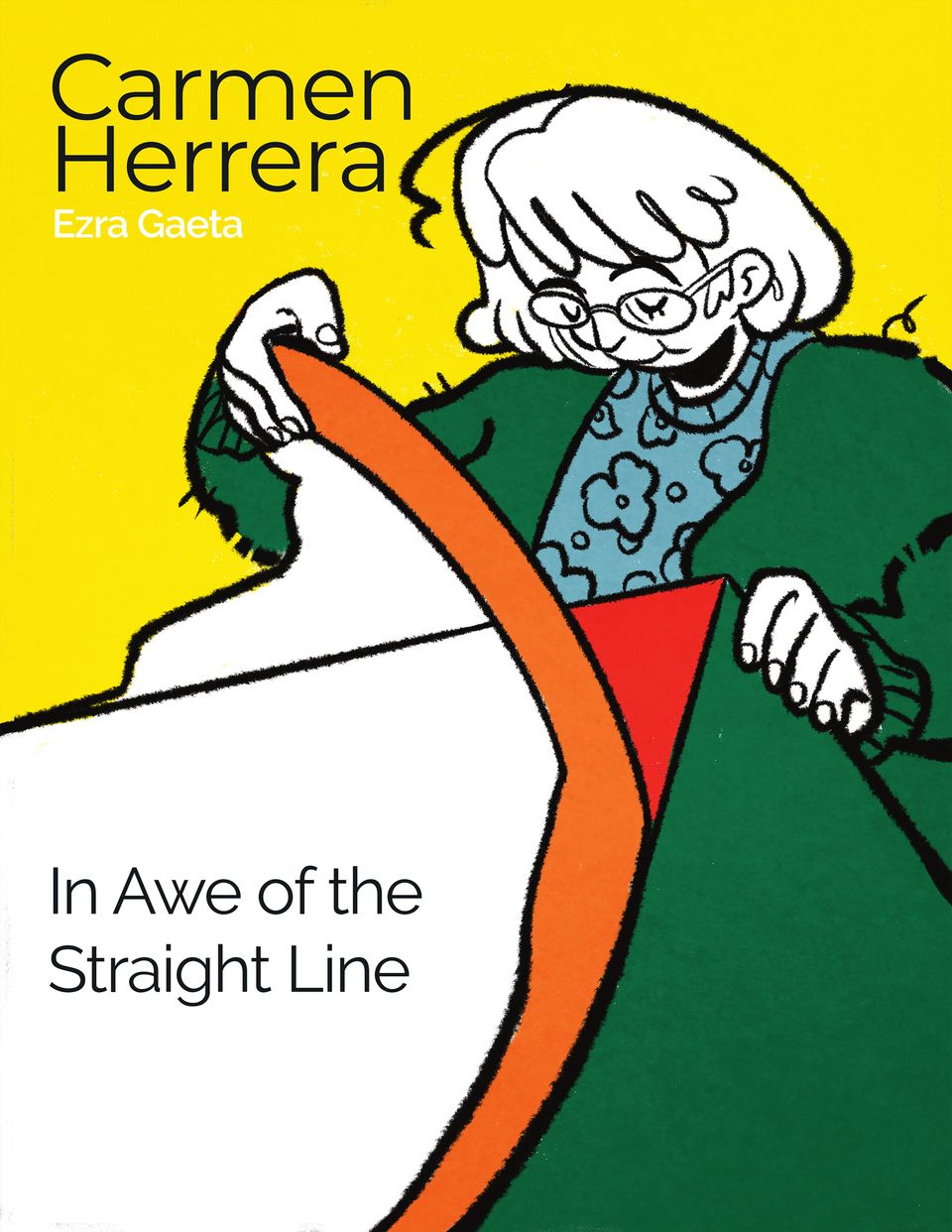
Comic book cover depicts an illustration of a woman, Carmen Herrera, who is drawn only in thick black outlines against white background. She is wearing glasses, a blue dress with black flowers, and a green sweater against a yellow background. She sits with a square canvas in her lap. The canvas is half covered in white and half in green, the same color as her sweater. She is peeling back orange painter’s tape on her artwork that is running diagonally from corner to corner to show a straight line down the center and to reveal that the white half of the canvas is red underneath. At the top of the page is the artist’s name, Carmen Herrera. On the artwork in her lap is the comic title. Text reads, “In Awe of the Straight Line.”
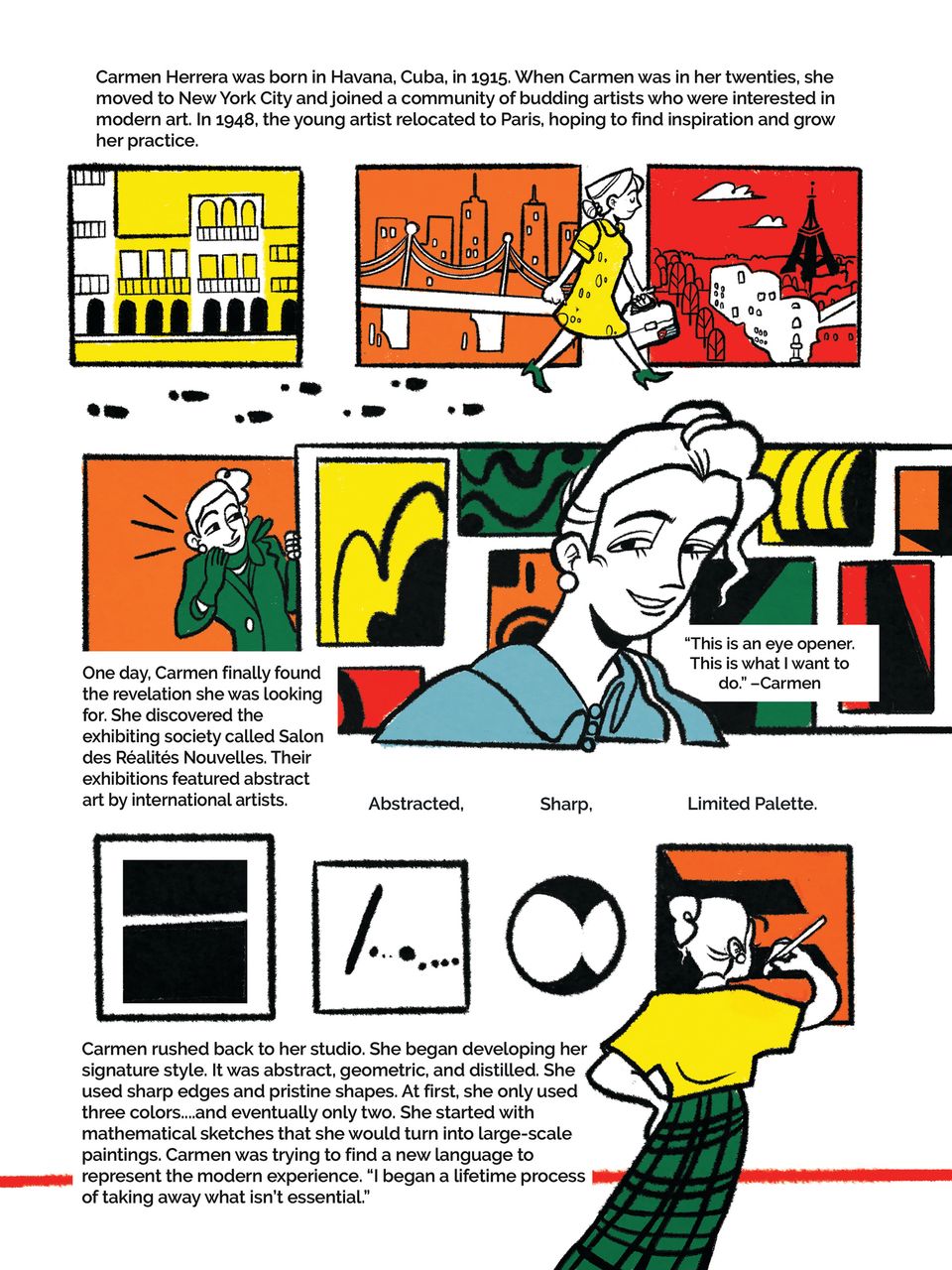
Panel one: At the top of the page, text reads, “Carmen Herrera was born in Havana, Cuba, in 1915. When Carmen was in her twenties, she moved to New York City and joined a community of budding artists who were interested in modern art. In 1948, the young artist relocated to Paris, hoping to find inspiration and grow her practice.” Underneath the text are three square scenes framed in black to form a strip across the top of the page. A young woman wearing a yellow dress with green shoes and carrying a travel case in her left hand, is walking across all three squares. Her black footprints trail underneath the three panels, in the foreground. In the first panel, the square is yellow, depicting the facades of a city street in Havana, Cuba. The buildings alternate white and yellow. The second square is orange and depicts a portion of a suspension bridge in front of a city skyline meant to symbolize New York City. The third square is red and is a loose sketch of a city with the Eiffel Tower in the background to indicate Paris. Panel two: The middle strip begins with an orange square and a woman in a green coat with her hair pinned up is peeking around a wall. Text reads, “One day, Carmen finally found the revelation she was looking for. She discovered the exhibiting society called Salon des Réalités Nouvelles. Their exhibitions featured abstract art by international artists.” To the right of the orange square, several smaller squares and rectangles in yellow, red, green, and orange depict a gallery wall of abstract art. Carmen’s head and shoulders face out, she is standing in front of the wall of art. Her hair is pulled back messily, and she is wearing a light blue dress. Text reads, “’This is an eye opener. This is what I want to do.’ --Carmen” Panel four: Along the bottom of the page are four shapes in a row on a white background, just like art hanging on the wall. The first is a white box with a thick black outline. Inside is a black square with a white line dividing it horizontally one-third of the way down. The second is a slightly smaller white box with a black outline. Inside are shapes of a horizontal line followed by eight dots of varying size and distance. Above it is the word “Abstracted.” The third shape is a black circle with two overlapping white circles inside. Above it is the word “Sharp.” The last shape depicts an abstract painting in orange and black. The artist stands in front, her back to the viewer, in the act of painting the orange square with a paintbrush in her right hand. Her hair is up in a bun and she is wearing a yellow top with a green and black plaid skirt. Above the image are the words “Limited Palette.” Below, text reads, “Carmen rushed back to her studio. She began developing her signature style. It was abstract, geometric, and distilled. She used sharp edges and pristine shapes. At first, she only used three colors…and eventually only two. She started with mathematical sketches that she would turn into large scale paintings. Carmen was trying to find a new language to represent the modern experience. ‘I began a lifetime process of taking away what isn’t essential.’”
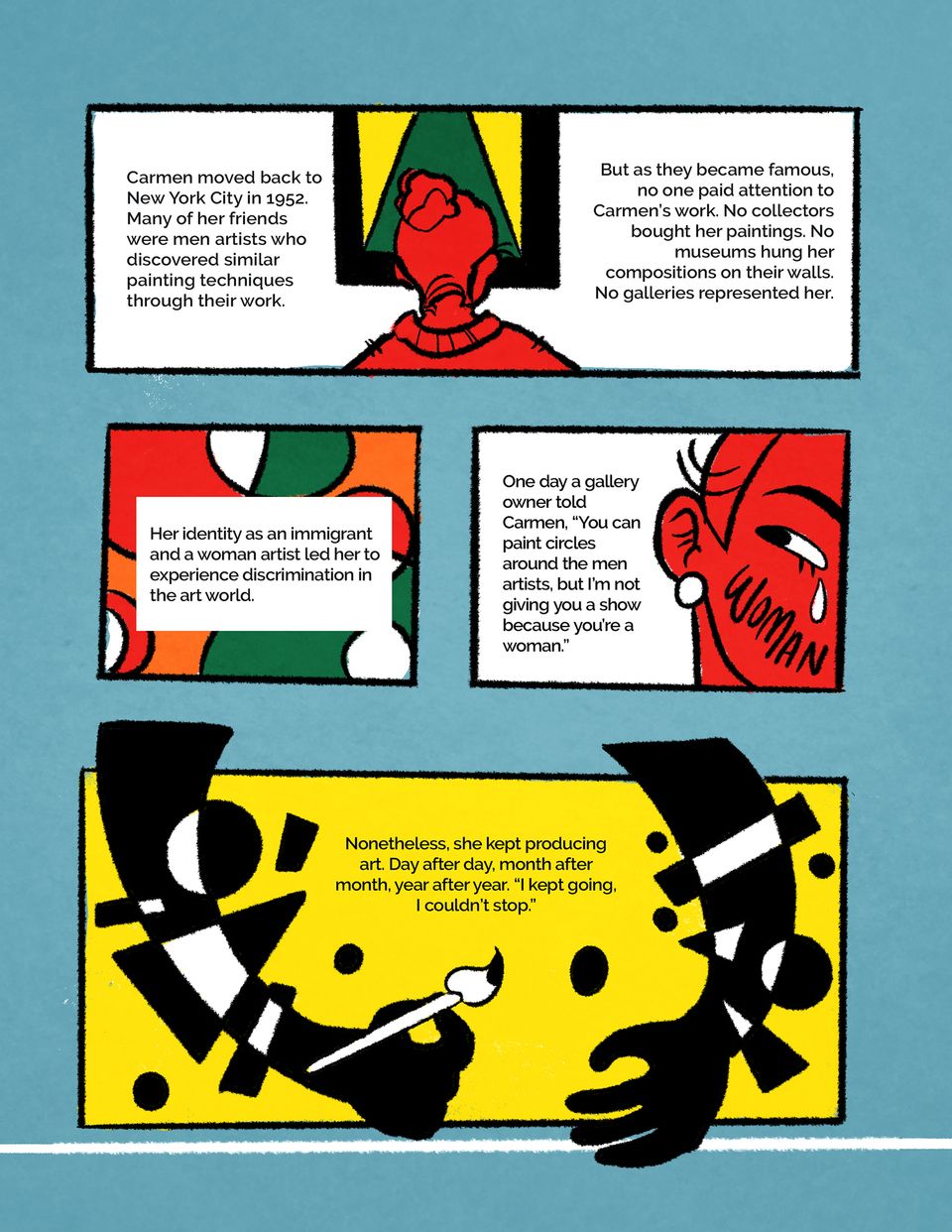
Panel one: A long rectangle with a white background stretches across the top of the light blue page. The back of Carmen’s head is in the center of the panel. Her hair is in a messy bun. Her shape is outlined in black, but she is entirely red: hair, skin, sweater. She stands in front of an abstract painting of a rectangle with a center green triangle and two yellow triangles on each side. To her left, text reads, “Carmen moved back to New York City in 1952. Many of her friends were men artists who discovered similar painting techniques through their work.” To her right, text reads, “But as they became famous, no one paid attention to Carmen’s work. No collectors bought her paintings. No museums hung on her compositions on their walls. No galleries represented her.” Panel two: A white box with an abstract background of red, orange, green, and white shapes. At the center, text reads, “Her identity as an immigrant and a woman artist led her to experience discrimination in the art world.” Panel three: A square with a close-up of a woman’s face, colored completely red. Only the right eye and ear is visible. The ear has a white, round earring. One white tear is falling from the eye. Written across the check in black curving script is the word “WOMAN.” Text reads, “One day a gallery owner told Carmen, ‘You can paint circles around the men artists, but I’m not giving you a show because you’re a woman’.” Panel four: A bright yellow rectangle extends across the bottom of the page. A pair of hands, rendered entirely in black silhouette, are reaching down from the top of the panel, framing each side. On the left side, the right hand is holding a paint brush. Abstracted black and white shapes cover the arms. In between the hands text reads, “Nonetheless, she kept producing art. Day after day, month after month, year after year. “I kept going. I couldn’t stop.”
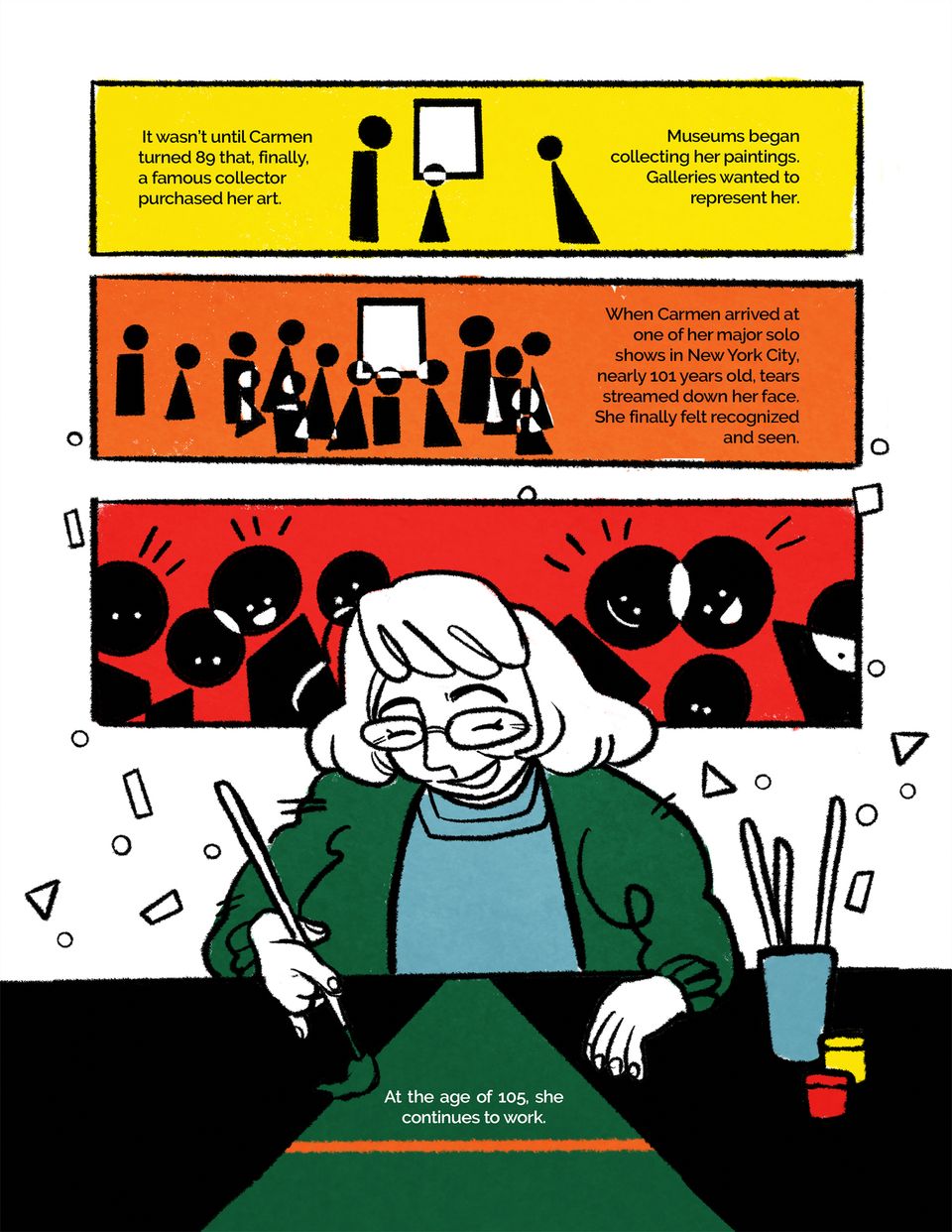
The page is comprised of three rectangular panels, as if paintings were hanging on the wall. Panel one: A long rectangle is yellow. In the middle are black triangles and circles that look like three abstracted people looking at a white square painting on the wall. To the left of the abstracted figures, text reads, “It wasn’t until Carmen turned 89 that, finally, a famous collector purchased her art.” To the right of the figures text reads, “Museums began collecting her paintings. Galleries wanted to represent her.” Panel two: This long rectangle is orange. There are more black and white abstracted figures to show many people looking at the white square painting on the wall. Text reads, “When Carmen arrived at one of her major solo shows in New York City, nearly 101 years old, tears streamed down her face. She finally felt recognized and seen.” Panel three: this rectangle is red. Against the read background are mostly black circles with white eyes and mouths to represent figures smiling down at the next panel. Above some figures’ heads, there are vertical lines to indicate enlightenment. Panel four: A person at the center of this panel that interrupts the panel above. An older woman sits in the center. She is the same woman on the cover page. She is the white of the page, drawn in thick black pen strokes. She is wearing glasses and has a smile on her face. She is wearing a blue turtleneck and a green sweater. She is sitting at a table painting. The table is a black painting with a green triangle in the center. The triangle has orange line running horizontally through the center and in the center, text reads, “At the age of 105, she continues to work.”
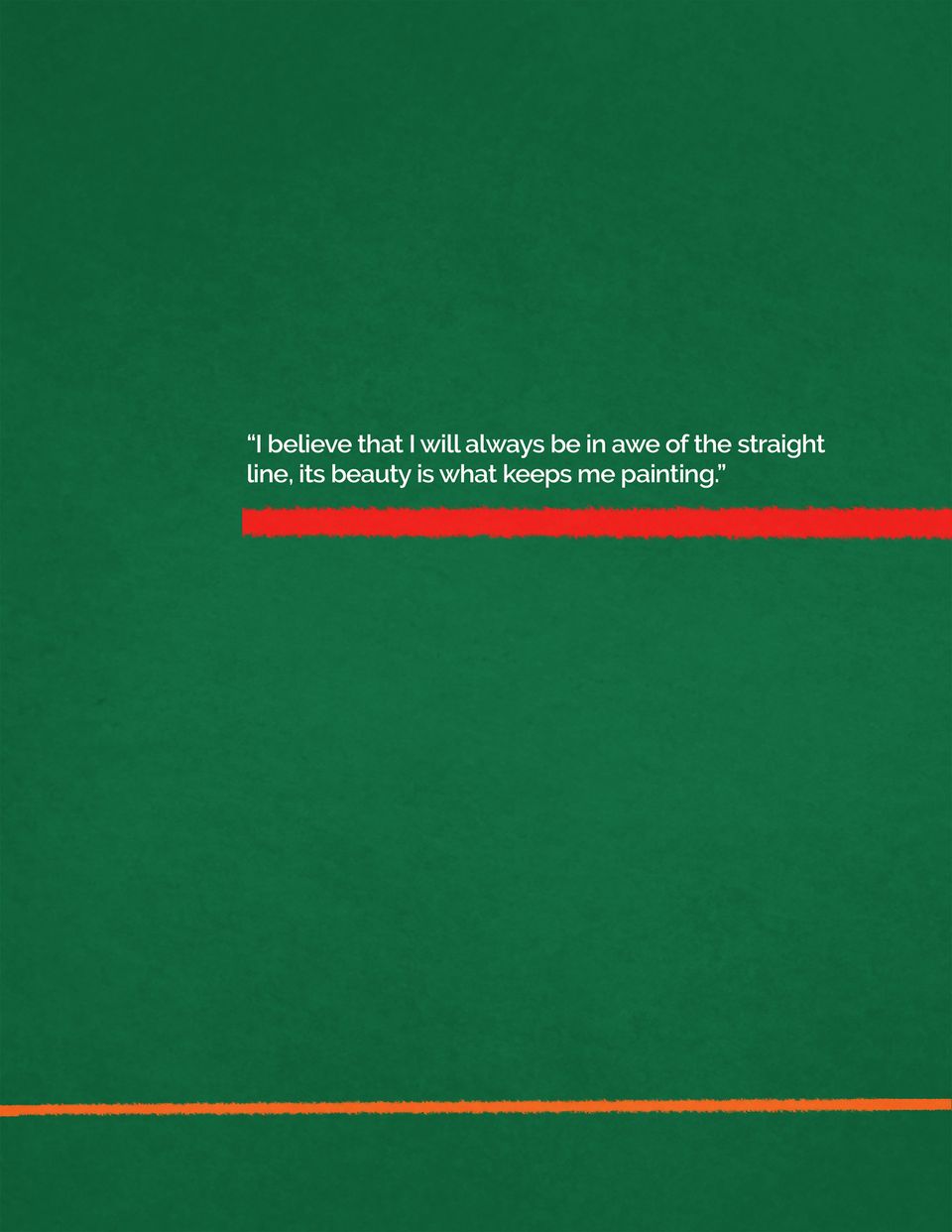
The page is a vivid green. A thick red line is in the center, going off the right side of the page. Above it, a quote in white text reads, “I believe that I will always be in awe of the straight line, its beauty is what keeps me painting.” A thinner orange line runs across the bottom of the page.
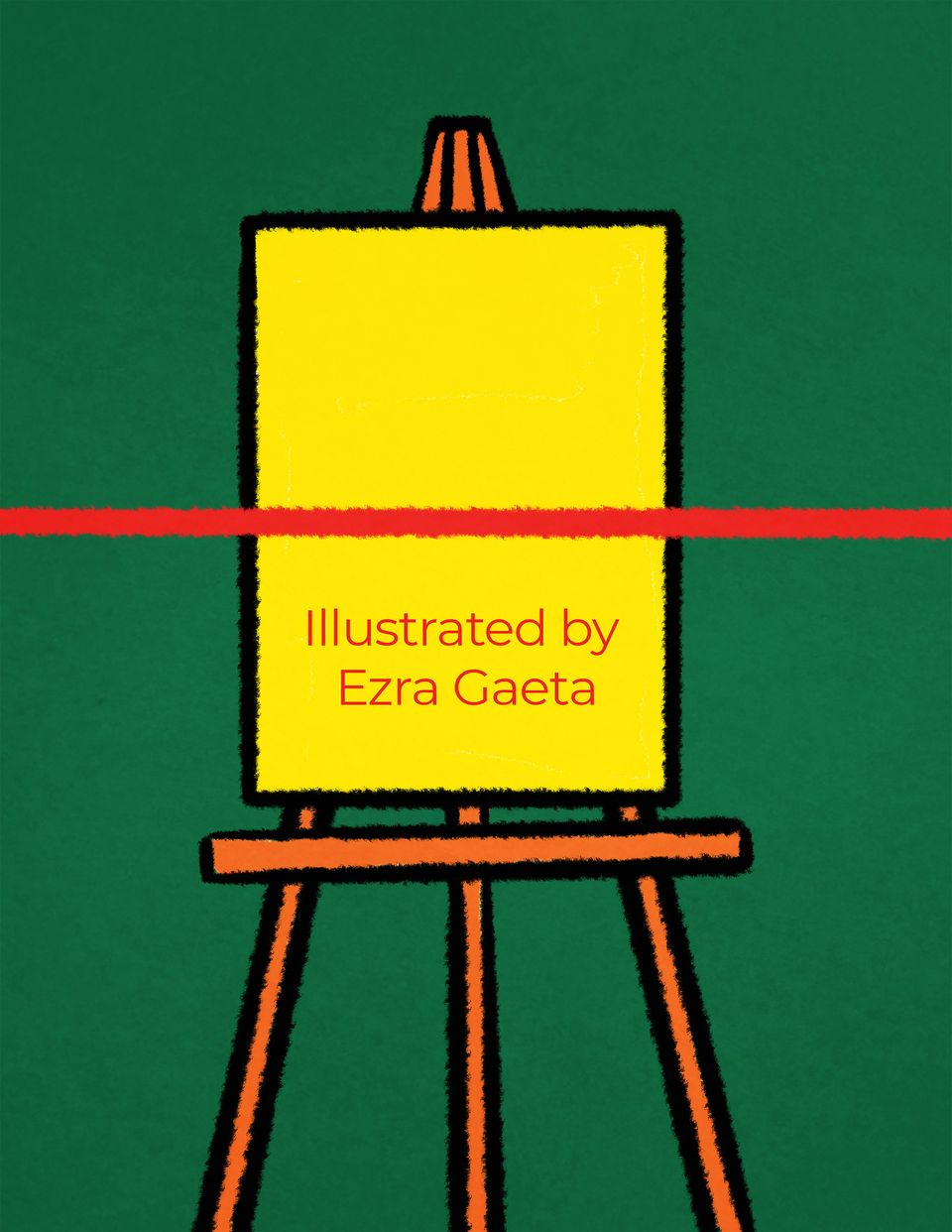
Long Text A brown easel is drawn in thick black lines. It stands against a green background. The canvas on the easel is yellow and has the words “Illustrated by Ezra Gaeta” in red. A thick red horizontal line runs across the whole page, including the easel above the text.














